Interfaces for Seamless Communication!
Communicate with your lighting network using web, mobile and voice applications
Interfaces Make set up & Management of your Smart Lighting Network Super Easy.
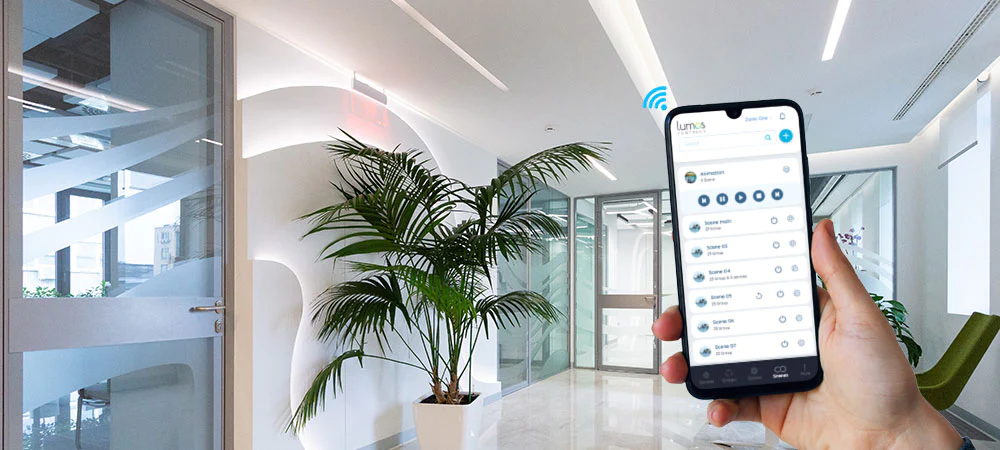
Groups
Groups enable you to add the devices into groups and control them as a single entity. You can ON/OFF, change intensity and color temperature of devices by adding controllers. Also, you can ensure automation by associating sensors and schedules. Switches can be added to the group to control the lighting devices manually.
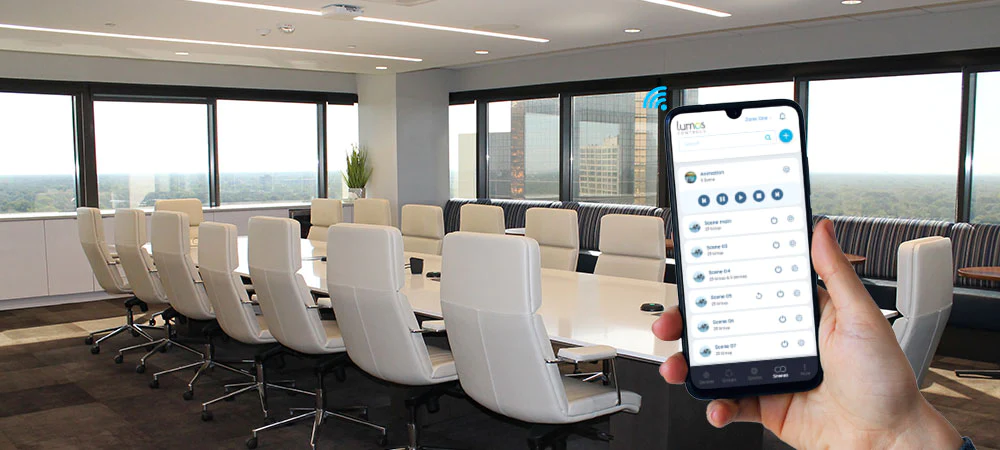
Scenes
Scene features allow configuring multiple light settings with a one-button command or activating lights based on preset schedules or responses. You can invoke a lighting scene across various locations with your tablets or smartphones. Another interesting feature of the scene is, you can activate a scene-setting using your voice using Alexa or Google Home.
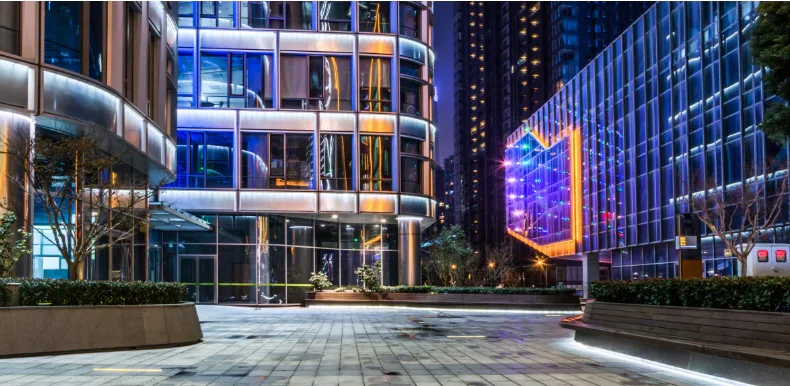
Spaces
Space is a group of groups. You can ON/OFF, change the intensity and color temperature of the devices in the space. You can add a group of devices into space to enable group control.

Scene Animation
Scene Animation is a group of scenes that fades from one scene to another. The duration of each scene and the time required for the scene to get activated can be configured. The luminaries behave as per the associated scenes' settings. One scene fades to play another, which gives the perfect ambience for your space. We can set a different string of LEDs to illuminate a historic moment in a museum for a specific period. Scene animations are best fit in restaurants, stadiums, etc.
Occupancy Sensing
Occupancy sensing technology is used to automatically dim or turn OFF lights when the space is occupied or vacant, for a certain user-preferred time period.
You can use occupancy sensing for multi-level lighting controls. This technology uses a motion sensor to detect and measure movements. When the space is occupied, the luminaries will turn ON or dim UP. When the space is vacant, lights will dim and then go off, after the stand-by time. By using this technology, you can save more than 40 % of energy usage. This sensing technology has PIR sensors and high frequency microwave sensors.
PIR sensors are compact, budget-friendly, and easy-to-use. It helps you to detect human presence within the sensor range, day or night. It is mostly applicable indoors and is well-fitted in smaller spaces.
Microwave sensors come with broader coverage and greater movement sensitivity. You can use this sensor in larger spaces, even with an uneven shape, for the best result.

Daylight Harvesting
Daylight Harvesting or open-loop systems use the photo sensor to measure the intensity of natural light, thereby adjusting the artificial light's intensity level. You should install an Open-loop sensor near a window or facing towards the source of daylight.
Closed-loop control systems use the photo sensor to detect the total amount of light intensity from both natural and electric sources in the environment. The detected light intensity level adjusts the intensity level of the artificial light to maintain preset ambient light intensities. Closed-loop sensors are typically installed indoors, facing away from the daylight source.
This technology can save an additional 5 to 25 percent of lighting energy in buildings that receive ample daylight and have many windows or skylights.
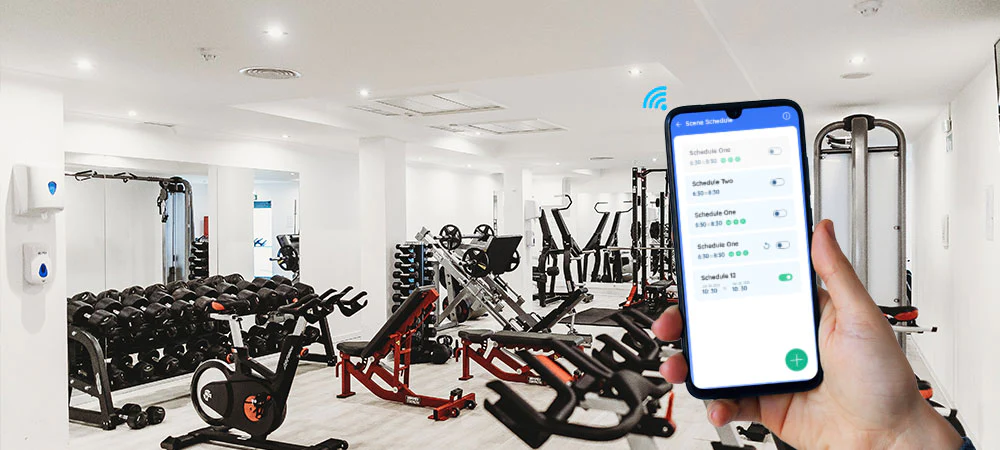
Schedule
Schedule is the process of planning the scenes and animations for a specific date and time for preset time intervals. This setting allows luminaires to dim or turn ON/OFF lights automatically. The Schedule feature can be implemented to turn OFF the lights in vacant spaces at night and on weekends to save a considerable amount of energy, thereby reducing lighting costs by more than 25%.

Manual Control
Manual control allows you to choose light levels of the luminaire, either by switching or dimming. The luminaries' manual control can be achieved using a switch to turn lights ON/OFF or DIM them UP and DOWN.
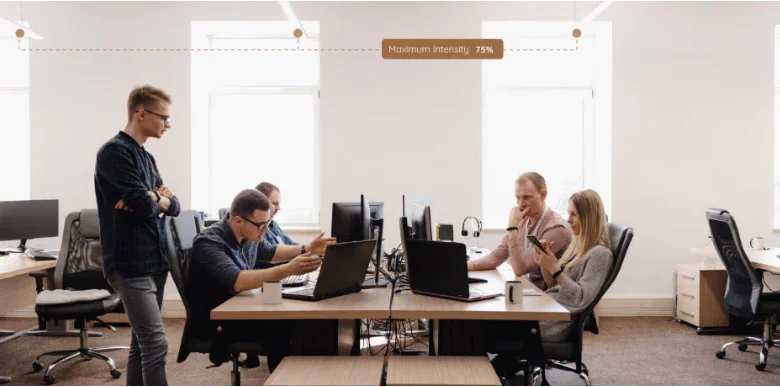
High-end Trim
High-end Trim or task tuning involves dimming lights in a space so that the average illuminance is appropriate for the type of use in that space. Most commercial spaces are over-lit for various reasons and Task tuning can save energy without decreasing occupant satisfaction. Setting the maximum light allowance, or high-end trim, saves energy, as not every space requires 100 percent light intensity. The intensity level in an area can be trimmed or tuned to less than 100% as per the user's choice. You can reduce electricity consumption from 10 to 30 percent by implementing a high-end trim function. This feature helps to maintain the light devices' uniform behavior when devices with different ranges (max intensity) have to be controlled simultaneously.
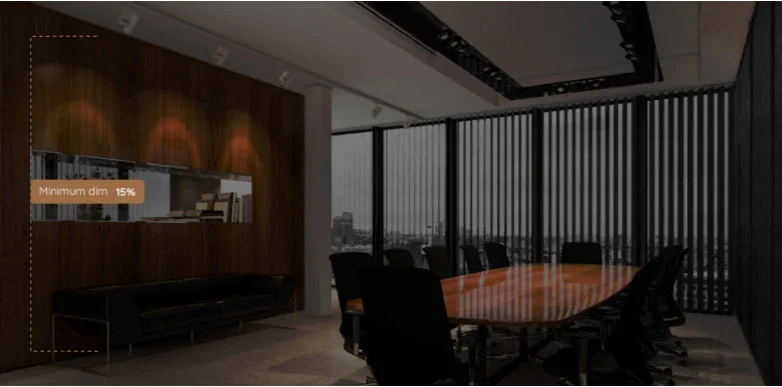
Low-end Trim
Low-end trim defines the lowest light level to a percentage other than zero. Setting the low-end trim assures that your lights don't turn off when they're dimmed to their lowest setting. This feature also sets a uniform behavior among the devices when a different range of devices are controlled simultaneously.

Change Intensity
Change intensity is the process of controlling and managing light to suit the circadian rhythm. This will help you to stay focused and energized throughout the day. You can set the right intensity of light for the right time. It will have a positive impact on your productivity and well-being.
Beacons
Beacons use low-energy Bluetooth technology to send signals to nearby smart devices. It is cost-effective, easy to set up, and manage. It allows you to identify customers' exact location at any given moment with astounding accuracy and send push notifications for deals, promotions, and personalized offers. The various types of beacons are iBeacon, Alt Beacon, Eddystone Beacon, Eddystone Beacon URL, and Custom Beacon. iBeacons can be used in a shopping mall or retail store to send a welcome message, promotional offer details. In a museum, beacons can be used to provide the details of an artifact when a visitor approaches the same.
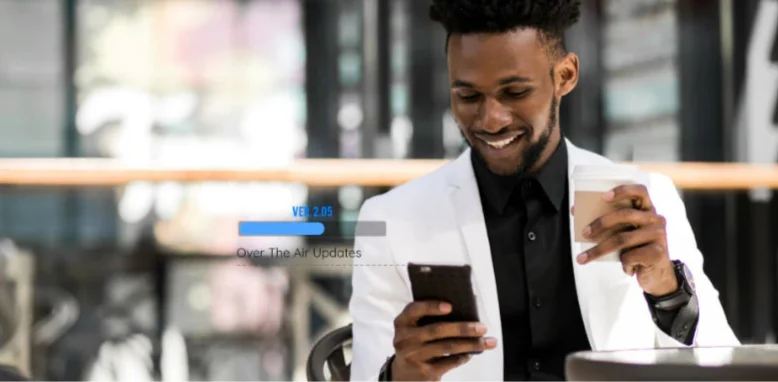
OTA Updates
Over-the-air (OTA) update is the process of automatically upgrading your devices' firmware using local/cloud OTA or mesh OTA. The local OTA option is used to update the firmware of the device locally. In Mesh OTA, delivery of the OTA update from one lighting device to another lighting device is triggered based on an update command sent via a wireless mesh network of the lighting system.
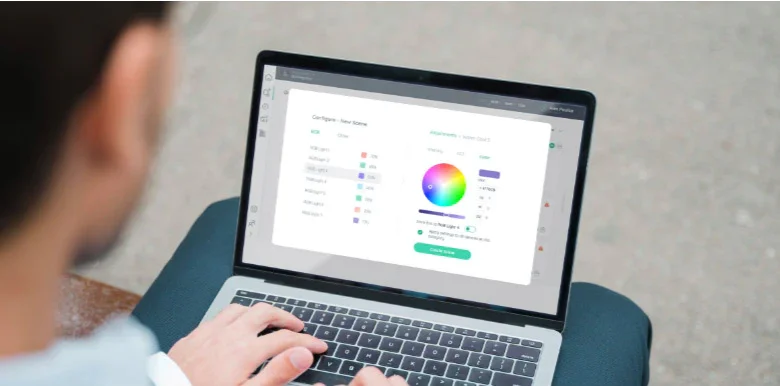
Remote Operation
You can remotely control all components of a communication network using a Gateway. It will allow you to collect data from the connected ecosystem/network and transmit them to the cloud. This feature helps you to control the luminaires, change the scenes, groups for your office remotely.

Web Application
Keep a tab on energy consumption, occupancy and usage patterns with our comprehensive reports. The web application empowers you with remote controlling capabilities.
Compatible withInterfaces make set up & management of your smart lighting network super easy.

Groups
Groups enable you to add the devices into groups and control them as a single entity. You can ON/OFF, change intensity and color temperature of devices by adding controllers. Also, you can ensure automation by associating sensors and schedules. Switches can be added to the group to control the lighting devices manually.

Scenes
Scene features allow configuring multiple light settings with a one-button command or activating lights based on preset schedules or responses. You can invoke a lighting scene across various locations with your tablets or smartphones. Another interesting feature of the scene is, you can activate a scene-setting using your voice, using Alexa or Google Home.

Spaces
Space is a group of groups. You can ON/OFF, change the intensity and color temperature of the devices in the space. You can add a group of devices into space to enable group control.

Scene Animation
Scene Animation is a group of scenes that fades from one scene to another. The duration of each scene and the time required for the scene to get activated can be configured. The luminaries behave as per the associated scenes' settings. One scene fades to play another, which gives the perfect ambience for your space. We can set a different string of LEDs to illuminate a historic moment in a museum for a specific period. Scene animations are best fit in restaurants, stadiums, etc.
Occupancy Sensing
Occupancy sensing technology is used to automatically dim or turn OFF lights when the space is occupied or vacant, for a certain user-preferred time period.
You can use occupancy sensing for multi-level lighting controls. This technology uses a motion sensor to detect and measure movements. When the space is occupied, the luminaries will turn ON or dim UP. When the space is vacant, lights will dim and then go off, after the stand-by time. By using this technology, you can save more than 40 % of energy usage. This sensing technology has PIR sensors and high frequency microwave sensors.
PIR sensors are compact, budget-friendly, and easy-to-use. It helps you to detect human presence within the sensor range, day or night. It is mostly applicable indoors and is well-fitted in smaller spaces.
Microwave sensors come with broader coverage and greater movement sensitivity. You can use this sensor in larger spaces, even with an uneven shape, for the best result.

Daylight Harvesting
Daylight Harvesting or open-loop systems use the photo sensor to measure the intensity of natural light, thereby adjusting the artificial light's intensity level. You should install an Open-loop sensor near a window or facing towards the source of daylight.
Closed-loop control systems use the photo sensor to detect the total amount of light intensity from both natural and electric sources in the environment. The detected light intensity level adjusts the intensity level of the artificial light to maintain preset ambient light intensities. Closed-loop sensors are typically installed indoors, facing away from the daylight source.
This technology can save an additional 5 to 25 percent of lighting energy in buildings that receive ample daylight and have many windows or skylights.

Schedule
Schedule is the process of planning the scenes and animations for a specific date and time for preset time intervals. This setting allows luminaires to dim or turn ON/OFF lights automatically. The Schedule feature can be implemented to turn OFF the lights in vacant spaces at night and on weekends to save a considerable amount of energy, thereby reducing lighting costs by more than 25%.

Manual Control
Manual control allows you to choose light levels of the luminaire, either by switching or dimming. The luminaries' manual control can be achieved using a switch to turn lights ON/OFF or DIM them UP and DOWN.

High-end Trim
High-end Trim or task tuning involves dimming lights in a space so that the average illuminance is appropriate for the type of use in that space. Most commercial spaces are over-lit for various reasons and Task tuning can save energy without decreasing occupant satisfaction. Setting the maximum light allowance, or high-end trim, saves energy, as not every space requires 100 percent light intensity. The intensity level in an area can be trimmed or tuned to less than 100% as per the user's choice. You can reduce electricity consumption from 10 to 30 percent by implementing a high-end trim function. This feature helps to maintain the light devices' uniform behavior when devices with different ranges (max intensity) have to be controlled simultaneously.

Low-end Trim
Low-end trim defines the lowest light level to a percentage other than zero. Setting the low-end trim assures that your lights don't turn off when they're dimmed to their lowest setting. This feature also sets a uniform behavior among the devices when a different range of devices are controlled simultaneously.

Change Intensity
Change intensity is the process of controlling and managing light to suit the circadian rhythm. This will help you to stay focused and energized throughout the day. You can set the right intensity of light for the right time. It will have a positive impact on your productivity and well-being.
Beacons
Beacons use low-energy Bluetooth technology to send signals to nearby smart devices. It is cost-effective, easy to set up, and manage. It allows you to identify customers' exact location at any given moment with astounding accuracy and send push notifications for deals, promotions, and personalized offers. The various types of beacons are iBeacon, Alt Beacon, Eddystone Beacon, Eddystone Beacon URL, and Custom Beacon. iBeacons can be used in a shopping mall or retail store to send a welcome message, promotional offer details. In a museum, beacons can be used to provide the details of an artifact when a visitor approaches the same.

OTA Updates
Over-the-air (OTA) update is the process of automatically upgrading your devices' firmware using local/cloud OTA or mesh OTA. The local OTA option is used to update the firmware of the device locally. In Mesh OTA, delivery of the OTA update from one lighting device to another lighting device is triggered based on an update command sent via a wireless mesh network of the lighting system.

Remote Operation
You can remotely control all components of a communication network using a Gateway. It will allow you to collect data from the connected ecosystem/network and transmit them to the cloud. This feature helps you to control the luminaires, change the scenes, groups for your office remotely.

Reports
Energy consumption reports are the graphical representation of the energy used by the devices in a building for a particular month/week/day. You can access energy consumption reports of individual devices and groups of devices.
Interfaces make set up & management of your smart lighting network super easy.

Groups
Groups enable you to add the devices into groups and control them as a single entity. You can ON/OFF, change intensity and color temperature of devices by adding controllers. Also, you can ensure automation by associating sensors and schedules. Switches can be added to the group to control the lighting devices manually.

Scenes
Scene features allow configuring multiple light settings with a one-button command or activating lights based on preset schedules or responses. You can invoke a lighting scene across various locations with your tablets or smartphones. Another interesting feature of the scene is, you can activate a scene-setting using your voice, using Alexa or Google Home.

Spaces
Space is a group of groups. You can ON/OFF, change the intensity and color temperature of the devices in the space. You can add a group of devices into space to enable group control.

Scene Animation
Scene Animation is a group of scenes that fades from one scene to another. The duration of each scene and the time required for the scene to get activated can be configured. The luminaries behave as per the associated scenes' settings. One scene fades to play another, which gives the perfect ambience for your space. We can set a different string of LEDs to illuminate a historic moment in a museum for a specific period. Scene animations are best fit in restaurants, stadiums, etc.

Manual Control
Manual control allows you to choose light levels of the luminaire, either by switching or dimming. The luminaries' manual control can be achieved using a switch to turn lights ON/OFF or DIM them UP and DOWN.

Change Intensity
Change intensity is the process of controlling and managing light to suit the circadian rhythm. This will help you to stay focused and energized throughout the day. You can set the right intensity of light for the right time. It will have a positive impact on your productivity and well-being.
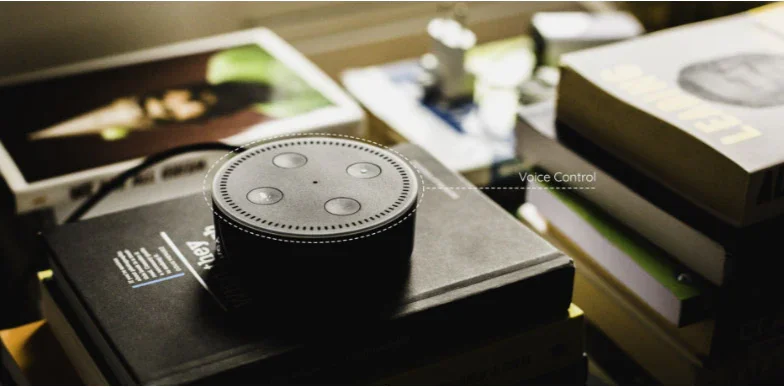
Voice Control
Voice Control technology is used to activate lighting devices with a spoken command. You can turn ON/OFF, and DIM the luminaires, invoke scenes and groups with voice inputs from Alexa or Google Home.

Remote Operation
You can remotely control all components of a communication network using a Gateway. It will allow you to collect data from the connected ecosystem/network and transmit them to the cloud. This feature helps you to control the luminaires, change the scenes, groups for your office remotely.



